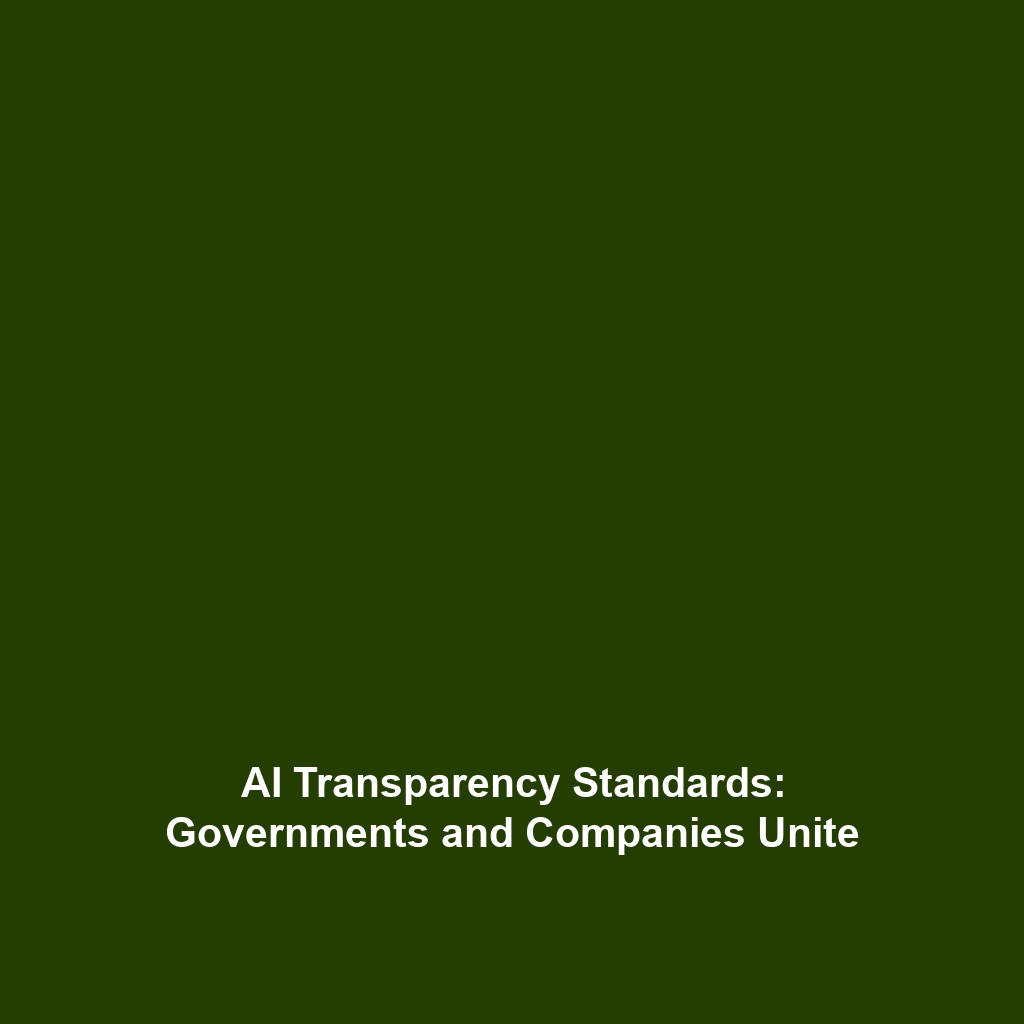How Governments and Companies Are Developing Transparency Standards for AI
The rapid proliferation of artificial intelligence (AI) technologies raises critical questions surrounding accountability and trust. As systems grow increasingly complex, ensuring transparency in AI development and deployment is essential for ethical practices. Governments and companies around the world are recognizing the need for standards that promote transparency, facilitate ethical compliance, and build public trust in AI systems. Understanding these developments is crucial in the broader context of AI ethics and responsible innovation.
Key Concepts of AI Transparency Standards
Transparency in AI refers to the degree to which stakeholders can understand how an AI system makes decisions. Developing effective transparency standards involves several key concepts:
- Explainability: Ensuring AI models can provide understandable justifications for their outputs.
- Accountability: Establishing clear responsibilities for AI’s actions and its consequences.
- Fairness: Guaranteeing that AI systems operate without bias, and that their decision-making processes are equitable.
- Privacy: Protecting personal data and ensuring data governance in AI applications.
These principles form the foundation of transparency standards which play a vital role in AI ethics, ensuring that AI systems are developed responsibly and used for the public good.
Applications and Real-World Uses
The application of transparency standards in AI is witnessing significant advancements across various sectors:
- Healthcare: AI systems in healthcare are using transparency standards to improve diagnostic accuracy and treatment recommendations while maintaining patient privacy.
- Finance: In finance, transparency standards help ensure that credit scoring algorithms are fair and explainable, supporting ethical lending practices.
- Autonomous Vehicles: Transparency in the decision-making processes of autonomous systems fosters trust among users and regulators.
These examples illustrate how developing transparency standards for AI is crucial in enhancing trust and ethical compliance within AI ethics.
Current Challenges in AI Transparency
While progress is being made, significant challenges remain in the development and application of transparency standards for AI:
- Complexity of AI Models: Many AI models, particularly deep learning systems, are inherently complex, making them hard to explain.
- Lack of Regulatory Frameworks: Many countries lack comprehensive regulations that enforce transparency standards in AI development.
- Data Privacy Concerns: Balancing transparency with the need to protect personal data can pose ethical dilemmas.
Overcoming these challenges is crucial for advancing transparency standards and promoting AI ethics.
Future Research and Innovations
As the field of AI continues to evolve, several innovations in transparency standards are on the horizon:
- AI Explainability Tools: Development of tools that can articulate the reasoning behind AI decision-making.
- Regulatory Innovations: Emerging frameworks aimed at enforcing ethical standards across jurisdictions.
- Collaborative Efforts: Increased collaboration between governments, industry, and academia to unify transparency efforts globally.
These innovations hold promise for shaping a future where AI operates transparently and ethically.
Conclusion
In summary, as governments and companies strive to develop transparency standards for AI, it is becoming increasingly clear that such initiatives are critical for ensuring ethical practices in AI application. Addressing the challenges and leveraging innovative solutions will pave the way for a more trustworthy AI ecosystem. For further reading on related topics, consider exploring our articles on AI Policy and Ethical Frameworks for AI.
